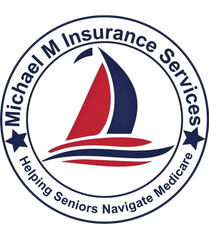Which option makes more sense in 2026?
Prescription drug costs are one of the biggest concerns for Medicare beneficiaries. You have two main ways to get drug coverage:
- A stand-alone Part D plan (used with Original Medicare, with or without a Supplement)
- Prescription drug coverage bundled into a Medicare Advantage plan (MAPD)
At first glance, they may look similar, but there are important differences. Let’s break it down.
If you stay with Original Medicare, you’ll likely need to buy a separate Part D plan for prescriptions.
Stand-Alone Part D (With Original Medicare)
What You Pay in 2026
- Deductible: Up to $615 (up from $590 in 2025)
MEDICARE COST SHARE 2026 - Out-of-Pocket Cap: $2,100 annually for covered drugs (slightly higher than 2025’s
$2,000)
MEDICARE COST SHARE 2026 - Average Premium: $34.50/month, down from $38.31 in 2025
MEDICARE COST SHARE 2026 - Insulin: No more than $35/month (or 25% of negotiated price, whichever is less)
MEDICARE COST SHARE 2026
Pros
- Freedom to pair with any doctor coverage. Works alongside Medigap for broad provider access.
- Flexibility in choosing your drug plan. You can select based on your prescriptions and preferred pharmacies.
Cons
- Separate policy to manage. You’ll have Medicare + Supplement + Part D, which can be three different bills.
- May cost more than Advantage drug coverage. Depending on your meds, premiums plus copays can add up.
Medicare Advantage Plans with Drug Coverage (MAPD)
Most Medicare Advantage plans include Part D coverage in the bundle.
What You Pay in 2026
- Deductible: Varies by plan, but capped at $615 (same as stand-alone)
- Out-of-Pocket Cap (Medical + Drugs): $9,250 (down slightly from 2025) MEDICARE COST SHARE 2026
- Premium: Often $0 or low monthly cost in many counties
- Drug costs: Based on the plan’s formulary and pharmacy network
Pros
- Convenience. One card, one plan, one bill for medical and drug coverage.
- Often cheaper. Many MAPDs include drug coverage for little or no extra premium.
- Shared risk = lower costs. Medicare Advantage plans now enroll more people than stand-alone Part D plans. With more members, they can spread risk and negotiate costs more effectively — often leading to lower drug costs for enrollees.
- Extra benefits. Bundled perks like dental, vision, and fitness programs.
Cons
- Network restrictions. You’re limited to certain pharmacies and providers.
- Formulary differences. A drug covered under one MAPD may not be under another — and changes can happen yearly.
- Less flexibility. If you don’t like your MAPD’s drug coverage, you can’t swap just the drug portion — you’d have to change the whole plan.
Which Is Better?
It depends on your situation:
- If you want provider freedom and don’t mind paying a bit more, a stand-alone Part D with a Supplement may make sense.
- If you’re cost-conscious and prefer a simpler, all-in-one option, Medicare Advantage with drug coverage often comes out cheaper — especially since Advantage plans can spread costs over a larger pool of members.
- If you take expensive medications, both options are capped at $2,100 out-of-pocket in 2026, but formulary differences can mean big swings in cost.
Key Takeaway
Both stand-alone Part D and Advantage drug coverage follow the same Medicare rules, but they play out differently in practice.
The best way to know which works for you is to:
- List your medications and preferred pharmacies
- Compare estimated annual costs under both setups
- Review with your broker , who can help you see whether Part D or Advantage drug coverage gives you the best value in 2026.

